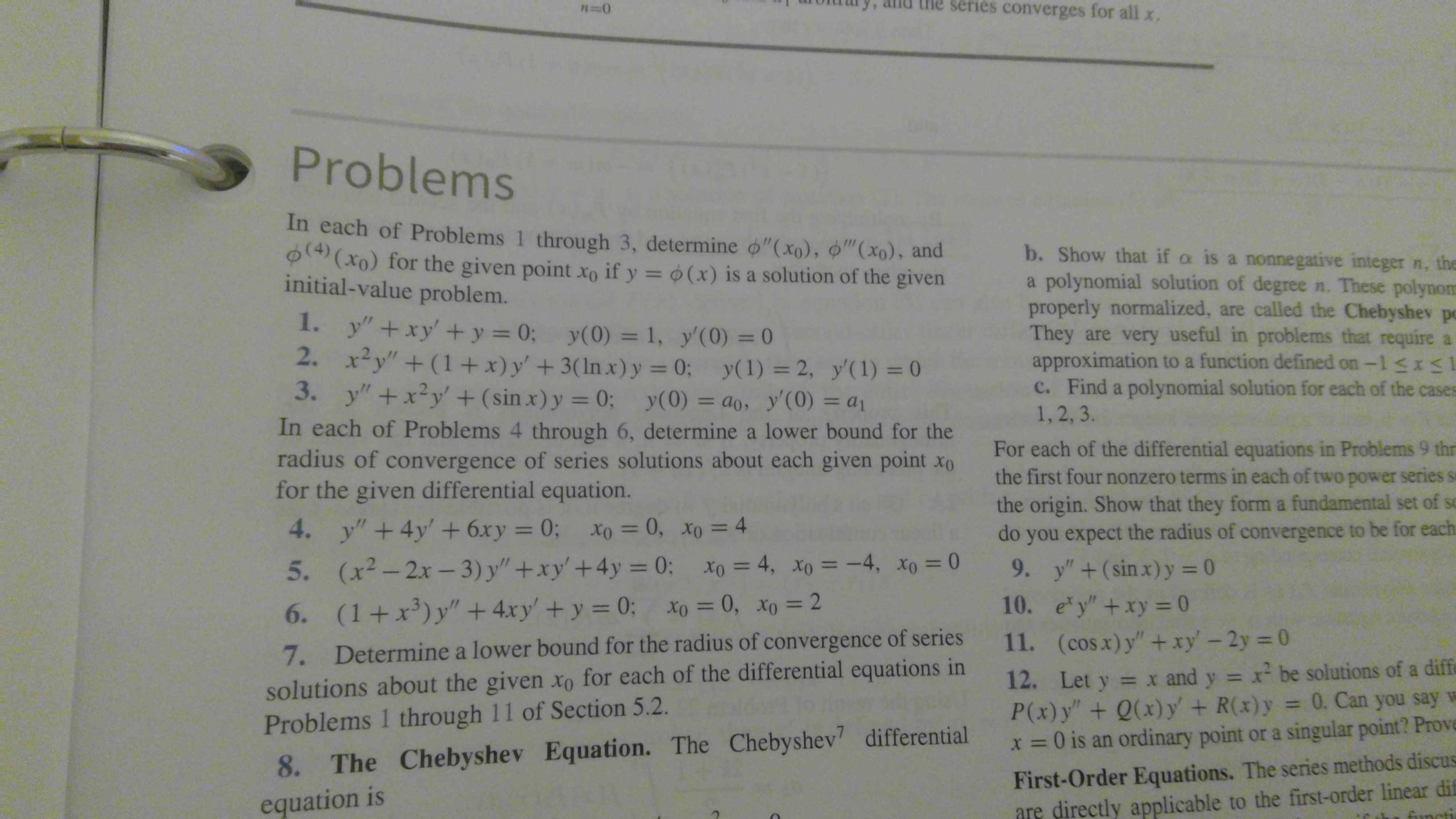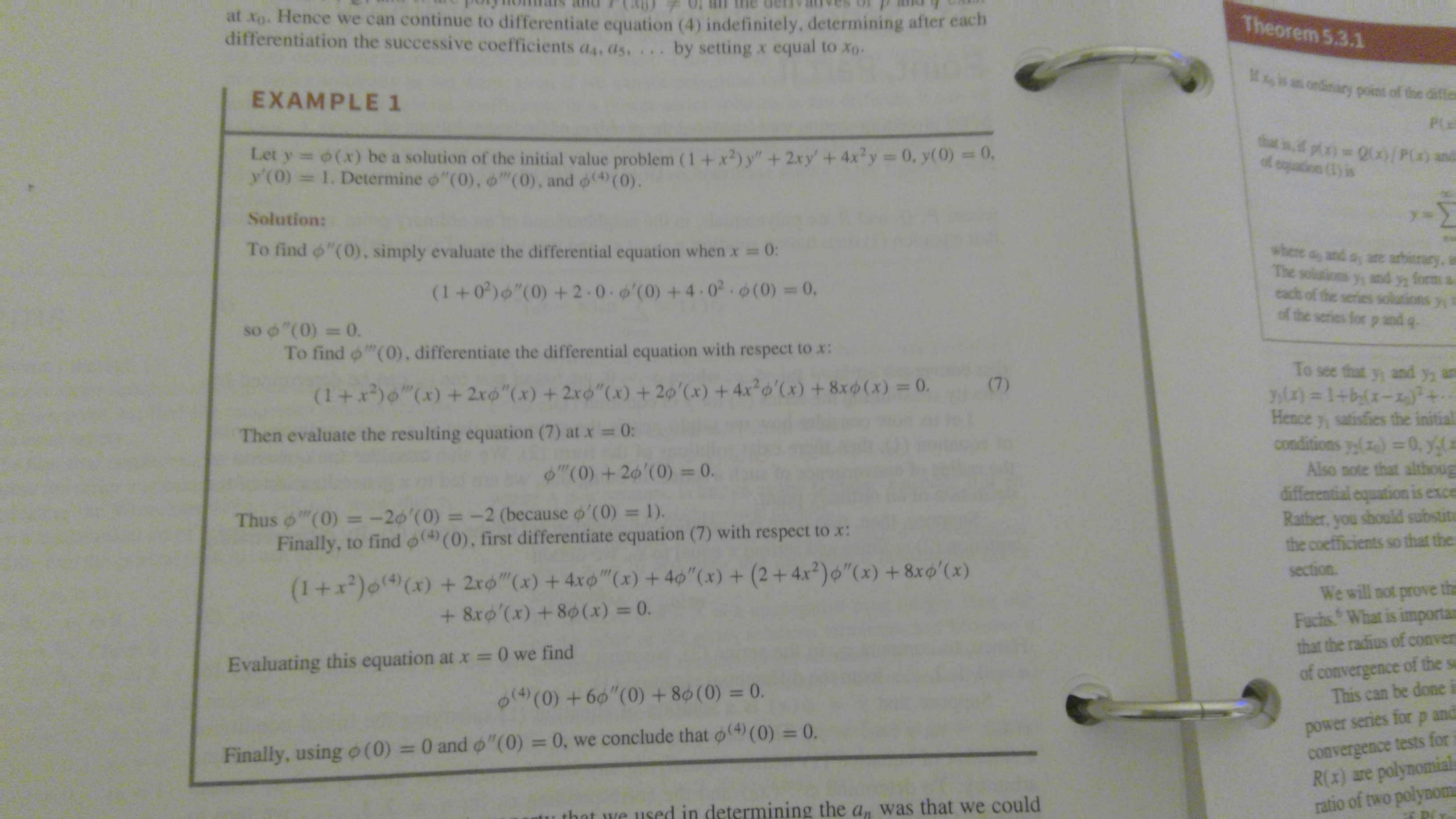How do I appropriately answer Problem #3 from my Differential Equations Textbook? This specific problem is from a section titled, "Series Solutions Near an Ordinary Point, Part II. I'm guessing that what I would need to do is use some type of Power Series that makes me get a's, and then try to determine the initial values. Although, I'm not quite sure. It wouldn't surprise me if that were the case because I have been doing such ways for a while. Except for any type of initial values.

Extracted text: series converges for all x. Problems In each of Problems 1 through 3, determine o"(xo), Q"(xo), and 0 (x0) for the given point xo if y = 0(x) is a solution of the given initial-value problem. b. Show that if a is a nonnegative integer n, the a polynomial solution of degree n. These polynom properly normalized, are called the Chebyshev po They are very useful in problems that require a approximation to a function defined on-1

Extracted text: at Xo. Hence we can continue to differentiate equation (4) indefinitely, determining after each differentiation the successive coefficients as, ds, by setting x equal to Xo- Theorem 5.3.1 M is an ondinary point of the differ EXAMPLE 1 PCe tht is, if px)Q00 P0) and of equation (1) is Let y y'(0) o(x) be a solution of the initial value problem (1+x?) y" + 2xy' + 4x2y 1. Determine o"(0), o"(0), and o(4)(0). 0, y(0)= 0, %3D Solution: where a and a are arbitrary. c The solutions y, and y form a each of the seria of the series for p and q. To find o"(0), simply evaluate the differential equation when x 0: (1+0)o"(0) +2.0.6(0) +4 02 0(0) 0, ons y so o"(0) = 0. To find o"(0), differentiate the differential equation with respect to x: To see that y, and y, am ()%3D1+b(x-x) Hence y, satisfies the initial conditions yy(x) =0, y( Also note that althoug differential equation is exce Rather, you should substits the coefficients so that the (7) (1+x)0"(x) + 2xo"(x) + 2xo"(x) + 20'(x) + 4.x²o'(x) + 8xo(x) = 0. Then evaluate the resulting equation (7) at x=0: %3D O"(0) +20'(0) = 0. %3D Thus o"(0) =-20'(0) =-2 (because o'(0) = 1). Finally, to findo(0), first differentiate equation (7) with respect to x: %3D section. We will not prove the Fuchs What is importan that the radius of convers (1+x²)6((x) + 2ro"(x) + 4xo"(x) + 40"(x) + (2 + 4x²)o"(x) + 8xo'(x) + 8xo (x) + 80(x) = 0. %3D of convergence of the sa This can be donei %3D Evaluating this equation at x =0 we find ((0) +66"(0) + 80 (0) = 0. power series for p and convergence tests for R(x) are polynomials ratio of two polynoma %3D %3D %3D Finally, using 0(0) = 0 and o"(0) = 0, we conclude that o( (0) = 0. tu that we used in determining the a, was that we could